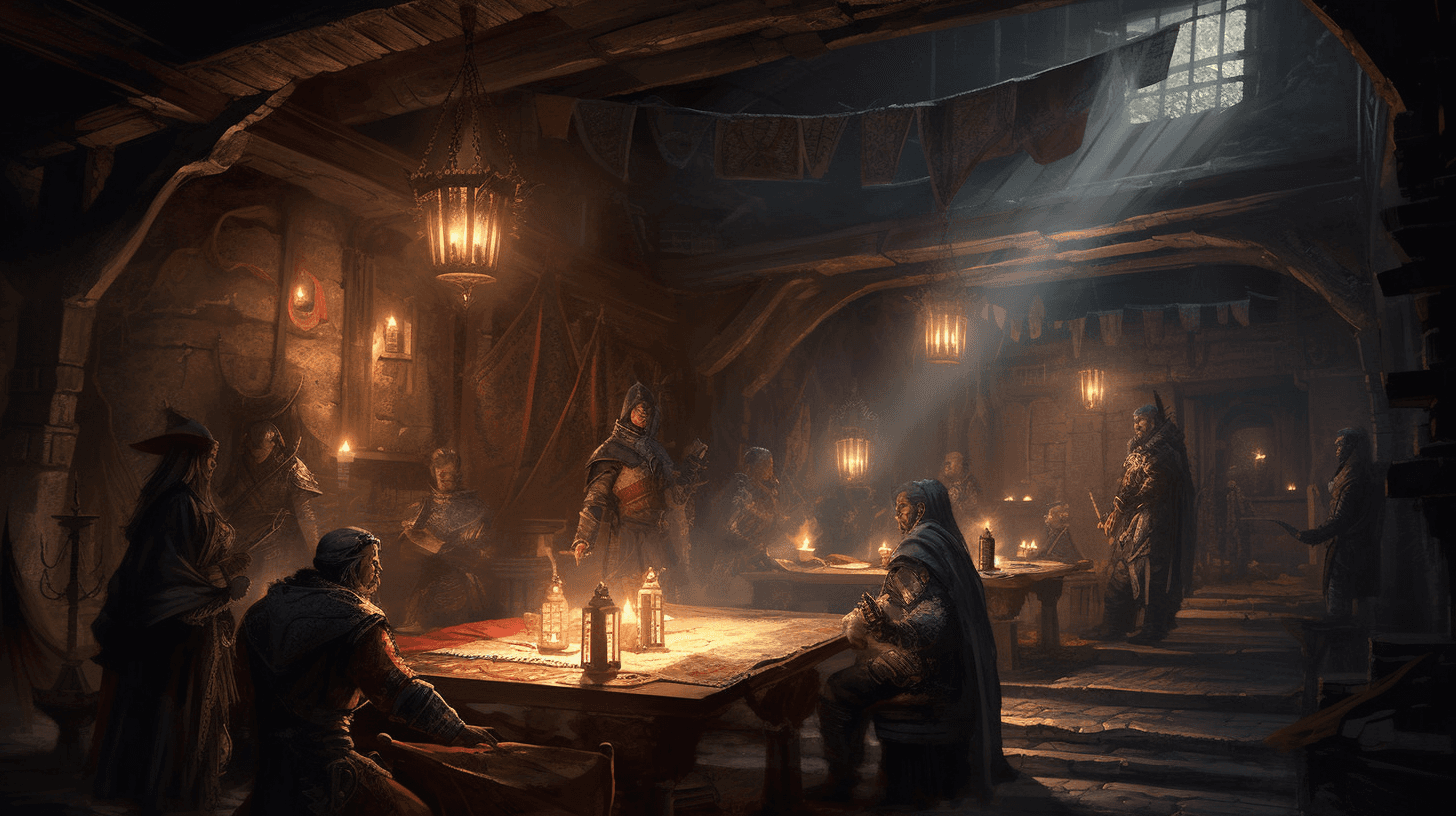As a kid, I would lay in my bedroom and dream about joining a thieves guild.
It’s no wonder either - the criminal world has no shortage of romanticization. But we rarely get the chance to act on these dreams. Joining the actual mob isn’t an option for many, nor is it advised.
So how do we live out our dreams on the tabletop? Easy. We create our own thieves guild and build our adventures around it.
This article is the first of several entries into our Thieves Guild series that explores how to create your very own thieves guild for your campaign setting.
In this article we’re going to take a look at:
What are thieves guilds? Where do they come from?
What role can they play in our campaigns?
Designing the organizational structure of a thieves guild
Defining the goals and motivations of a thieves guild
Defining how a thieves guild operates
Let’s get started.
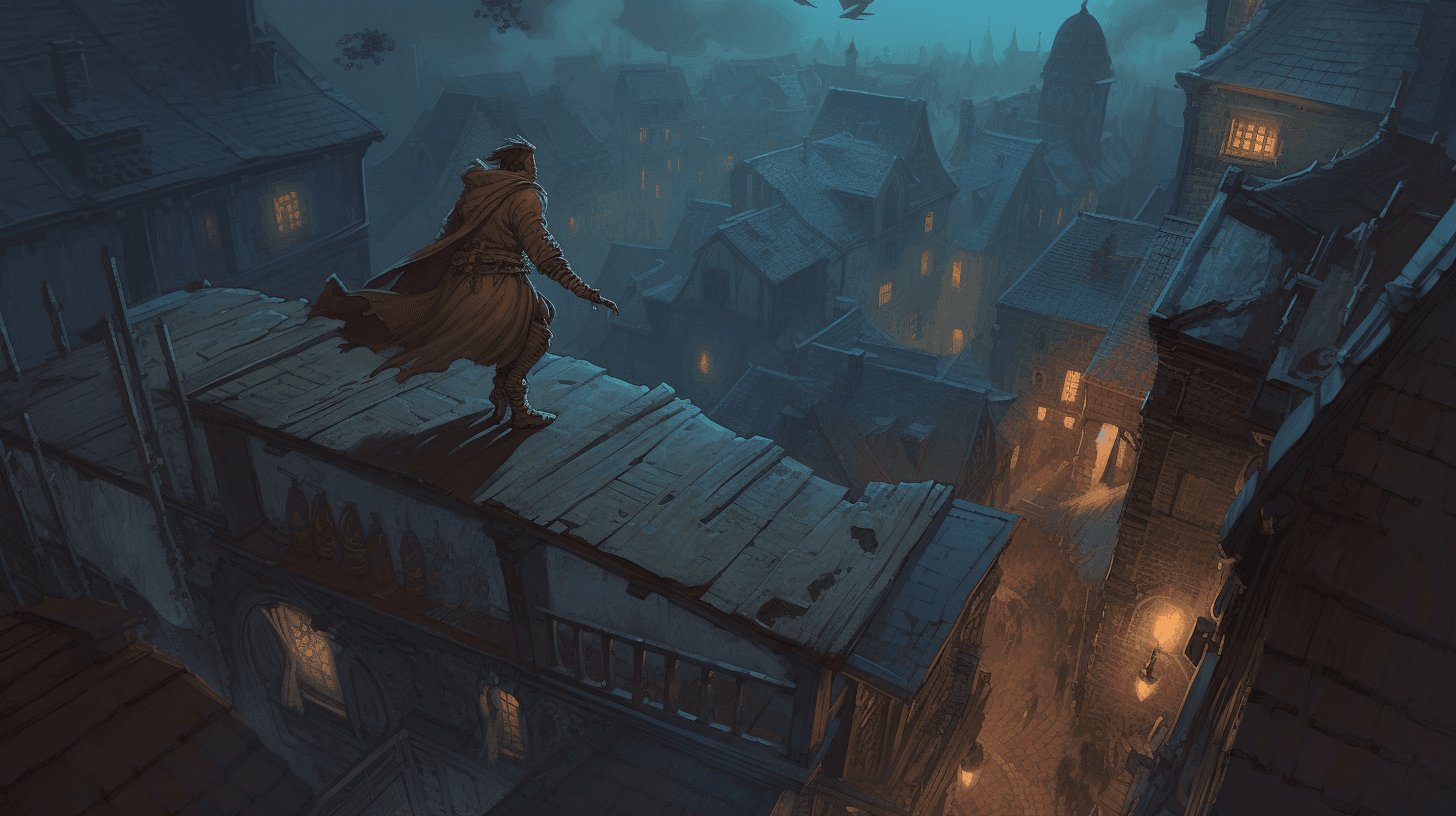
What is a Thieves Guild?
A Thieves Guild is a clandestine organization, often operating within urban environments, dedicated to the training, support, and protection of its affiliated thieves. Their activities range from pickpocketing to intricate heists and even political maneuverings. The idea is quite fascinating, isn't it?
But were there Thieves Guilds in the real world, or are they purely the stuff of fiction and folklore? Historically, no concrete evidence exists to support the existence of such formal criminal organizations termed as 'Thieves Guilds'. However, organized crime networks have certainly existed throughout history, and their operations share parallels with the fictional portrayals of Thieves Guilds.
Take, for example, the Sicilian Mafia, a secret society from the mid-19th century, with structured hierarchies and elaborate codes of conduct. While not termed a 'Thieves Guild,' the Mafia fits the general archetype. Alternatively, consider the rogues in Charles Dickens' Oliver Twist, operating under the watchful eye of Fagin. Though a literary example, Dickens' portrayal mirrors the real world's criminal underbellies.
The Role and Function of Thieves Guilds in a TTRPG Setting
Within the realm of a TTRPG, a Thieves Guild can serve numerous functions, each adding layers of complexity and interest to your campaign. Here are a few:
Plot Development: A Thieves Guild can be the source of quests, offering intrigue or mystery-based assignments that can draw the player characters into their web.
Character Development: A character may be a former or current member, creating personal stake and potential conflict.
World-Building: The presence of a Thieves Guild indicates certain societal conditions, such as corruption or wealth disparity, contributing to the richness of your setting.
Imagine a Thieves Guild in the bustling city of Silverport. This guild manipulates political events from the shadows, their web of influence leading to unexpected plot twists. The campaign could involve players in the guild's schemes, intentionally or not, providing narrative drive and tension.
The Benefits of Including a Thieves Guild in Your Campaign
Creating and maintaining complex organizations like Thieves Guilds can be additional work for you as a DM. However, there are certainly upsides.
You gain narrative depth: A Thieves Guild can introduce layered narrative arcs and complex motivations.
You can create more dynamic encounters: Thieves Guilds can provide unique combat and social encounters, challenging players in different ways.
You gain added versatility: They can serve as allies, antagonists, or something in-between, providing flexibility for your story.
You create opportunities for character growth: For character backgrounds and development, a Thieves Guild offers ample opportunities.
If you’re struggling to get your players engaged into your story, adding structure to the world that they are playing in can help. A Thieves Guild can solve the problem of narrative stagnation, providing new avenues for exploration and engagement. They help keep the campaign fresh, challenging, and unpredictable, thereby enriching the overall experience for you and your players.
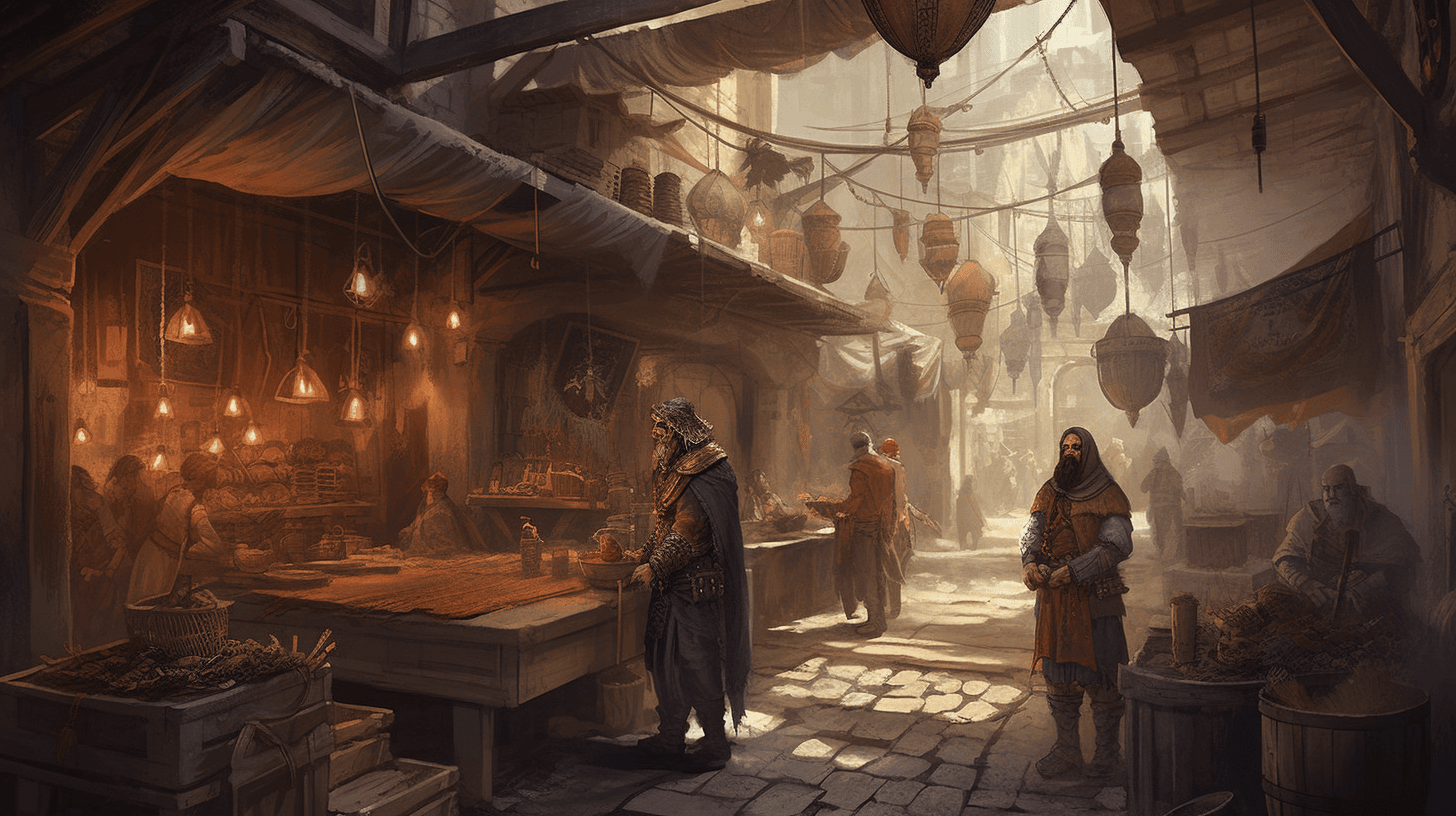
II. Designing the Guild's Organizational Structure
A. Different Models for Guild Structure and Hierarchy
In the world of Thieves Guilds, organization is far from mere bureaucracy; it's the glue that holds together an entity thriving in the underbelly of society. There are a few prime structures that your guild could adopt:
Centralized Hierarchy: Here, the guild operates under a single, top-tier leader - the Guildmaster. Every order, decision, and strategy traces back to this sole figurehead, making the structure straightforward but somewhat rigid.
Council of Seniors: Alternatively, you could have a council, a collective of experienced members who make decisions collectively. The benefit here lies in the shared responsibility, wisdom, and the potential for varied perspectives.
Decentralized Network: Lastly, consider a more fluid, network-style setup where authority is distributed. Leadership in this model isn't about holding a title, but about earning respect and trust within the network.
While a centralized hierarchy allows for swift decision-making, it does run the risk of instability - should the Guildmaster fall, chaos often ensues. In contrast, a council ensures resilience against such single-point failures but may suffer from indecision due to conflicting viewpoints. The decentralized network, while promoting flexibility and adaptability, might struggle with consistent direction and control.
B. Discussion of Various Roles within the Guild
Behind every successful heist or covert operation are key roles that orchestrate and execute the guild's intricate plans:
Guildmaster: The commander-in-chief. This person holds the reins and often has the last word on strategic matters.
Fence: The go-between for the guild's stolen goods, transforming illicit gains into usable resources.
Enforcer: The muscle, ensuring internal discipline and defending guild interests when necessary.
Spymaster: The eyes and ears, gathering intelligence and maintaining the guild's knowledge network.
Shadow Broker: The diplomat, managing external relationships and creating alliances or rivalries.
Each of these roles has a significant part in the guild's success and contributes to the overall functioning of the organization.
Remember, these roles are simply examples. There’s nothing stopping you from creating your own roles to flesh out your guild’s ranks.
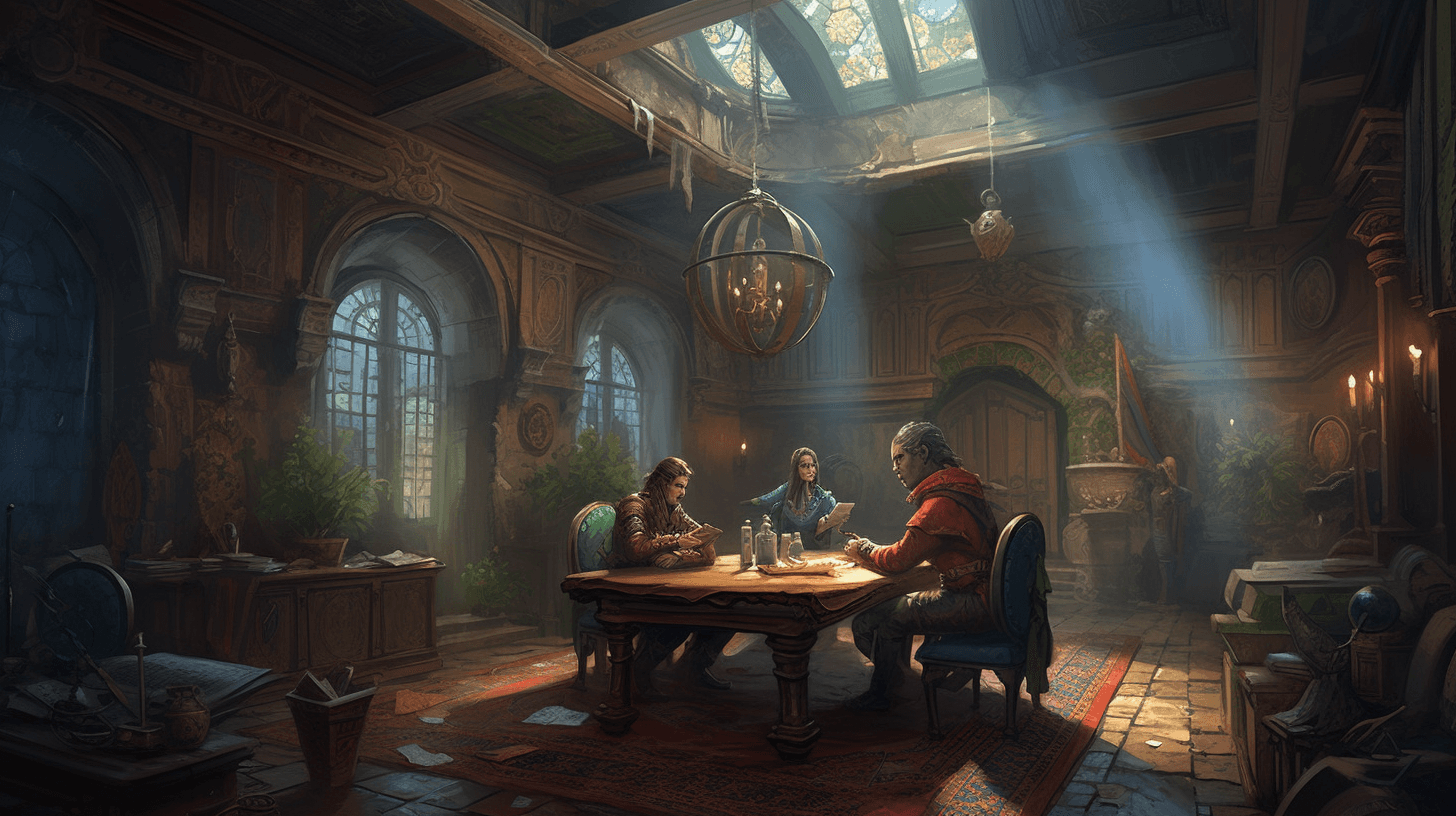
C. Pros and Cons of Each Structure, and Factors to Consider When Choosing One
Choosing an organizational structure is like selecting the right tool for a job; it largely depends on what you aim to achieve and the resources at your disposal.
For a campaign focusing on swift action and high-stakes decisions, a centralized hierarchy may be the way to go. On the other hand, a campaign that values intrigue, diplomacy, and internal politics might flourish with a council. If your goal is to emphasize player freedom and individual initiative, the decentralized network could be your top pick.
In any case, consider the setting of your campaign, the goals of the guild, and the dynamics of player interactions. These factors will help guide you towards the most appropriate choice for your gameplay experience.
Remember, the structure should serve the campaign, not vice versa.
D. Practical Applications
Whether you choose a centralized hierarchy, a council of seniors, or a decentralized network, remember that each structure offers a unique canvas upon which to paint your campaign. By understanding the roles within these structures and the dynamics they create, you can design rich, immersive experiences that will engage your players and make your Thieves Guild come to life.
At the end of the day, the structure you choose serves to tell a story - make sure it's one worth stealing.
III. Determining the Guild's Goals and Motivations
A guild is nothing without something to work towards, otherwise, why are they organized in the first place? Understanding a guild’s motivation is key to creating an immersive experience for players. It has to make sense, otherwise it feels like a gimmick.
1. Different Possible Motivations for a Thieves Guild
Accumulation of Wealth: This one is a classic - who doesn't love a treasure-laden vault? But this motivation goes beyond the sparkle of gold. Wealth symbolizes power and status in many societies, and amassing it could be the cornerstone of your guild's operations.
Pursuit of Power and Influence: As the saying goes, "Knowledge is power." The guild may be orchestrating grand schemes not for wealth but to control the puppet strings of their city's power structures.
Rebellion against Oppressive Regimes: Not all thieves steal for personal gain. Perhaps your guild fights against a tyrannical ruler, with their acts of thievery a form of civil disobedience.
Seeking Knowledge and Artifacts: Sometimes, the allure lies not in gold but in the arcane and the ancient. If your guild craves long-lost knowledge or magical relics, every theft becomes an adventure in itself.
Remember, these motivations don't just guide the guild's actions—they inform their relationships with other factions, shaping the dynamics of your campaign world.
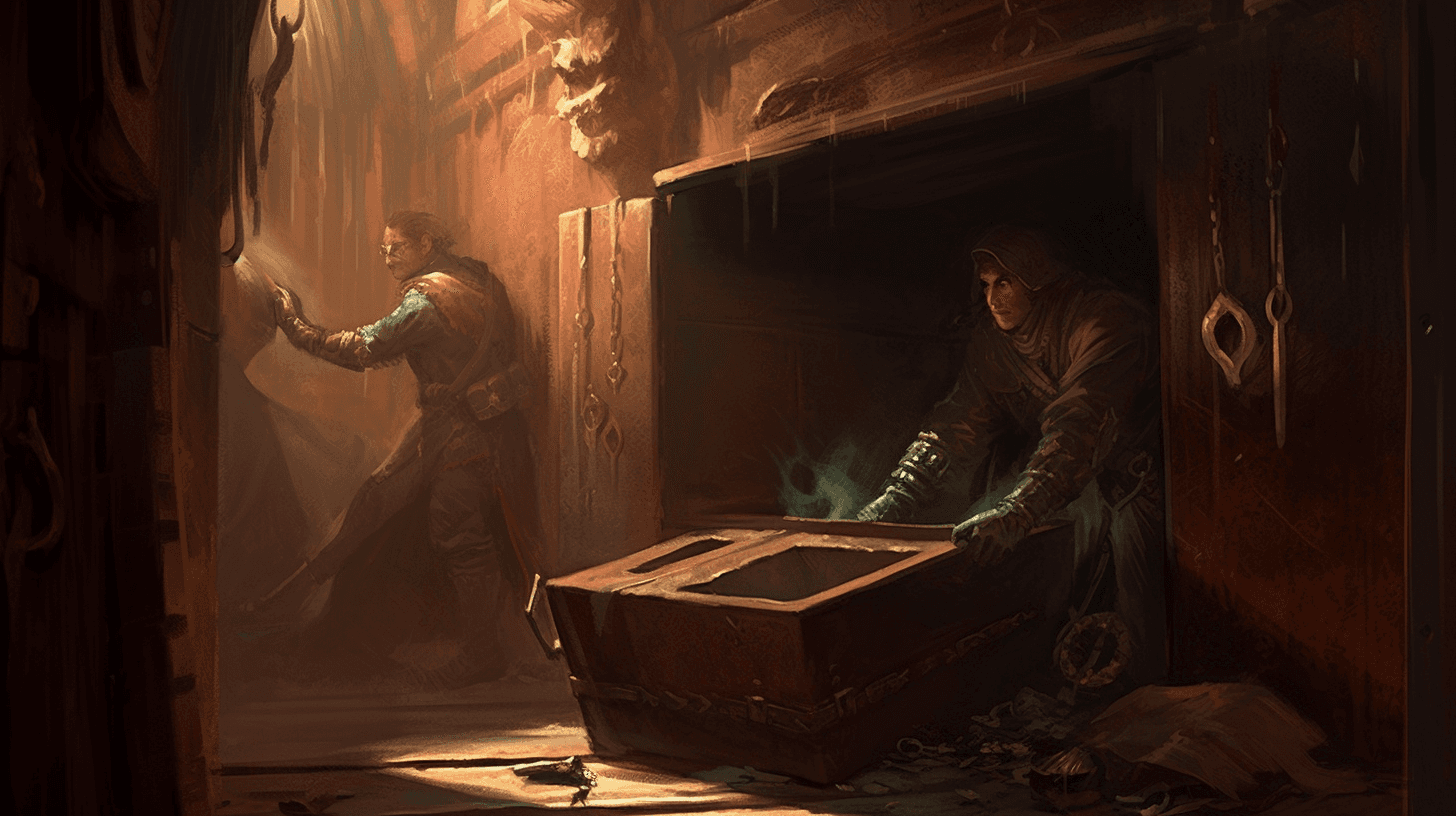
2. The Importance of Aligning Guild Goals with Campaign Themes
Ensuring your Thieves Guild's motivations align with the campaign themes is crucial. You wouldn't want your players to feel like they're stuck in a mismatched jigsaw puzzle, would you? The guild's goals should act as a mirror to the broader themes and conflicts of the campaign.
Say your campaign revolves around the theme of rebellion against tyranny. A guild driven by the same cause would mesh perfectly into the narrative, providing players with a relatable ally (or adversary) and adding a sense of unity to the story.
A well-aligned guild isn't just a narrative accessory—it's an organ that pumps life into your campaign, offering players choices that matter.
3. How to Weave Guild Motivations into Campaign Narrative and Character Interactions
How to incorporate your guild into an existing storyline may not be clear at first. Here are a few options to consider:
Main Storyline: Your Thieves Guild could be an essential plot driver. For example, if the guild seeks a powerful artifact, its race against other factions to obtain it could fuel the main questline.
Side Quests: Guild activities can give birth to numerous side quests. Tasks could range from espionage missions to negotiating alliances, depending on the guild's goals.
Character Arcs: The guild's motivations can play a pivotal role in individual character stories. Perhaps a player has a personal grudge against the guild, or maybe they're secretly a member!
You can enhance the roleplaying experience by fostering alliances, creating tension, and even introducing moral dilemmas relating to the guild's operations. Remember, your goal is not just to tell a story but to give your players the reins to build their own narratives within your world.
IV. The Guild's Modus Operandi
Like religions, not every thieves guild are cut from the same cloth. Each have their own codes, their own beliefs, and their own ways of surviving. This Modus Operandi impacts how the guild interacts with the world around them, and in turn the world around them reacts.
A. Traditional and Unconventional Methods of Operation
Let's start with the classics. Thieves Guilds thrive on the art of thievery. Some common techniques include:
Pickpocketing: The ol' sleight of hand is an essential skill for any thief. A crowded market or tavern provides an ideal hunting ground.
Burglary: A more daring endeavor, requiring careful planning, quiet feet, and a talent for lock picking.
Blackmail: Information, as they say, is power. Uncovering secrets can turn even the mightiest of lords into puppets.
Smuggling: The transporting of contraband goods through intricate networks of underground tunnels and secret paths.
Assassination: A deadly, yet lucrative, profession that targets high-value individuals.
Moving into more unconventional territory, Thieves Guilds could leverage magic, illusion, and stealth-based abilities to enhance their operations. Imagine thieves who can walk through walls, become invisible, or create illusory distractions.
Keep in mind, the world around the guild will not simply accept their fates. If thieves are using magical means for theft, you can bet that they’re likely to run into traps and other security measures designed to prevent magic.
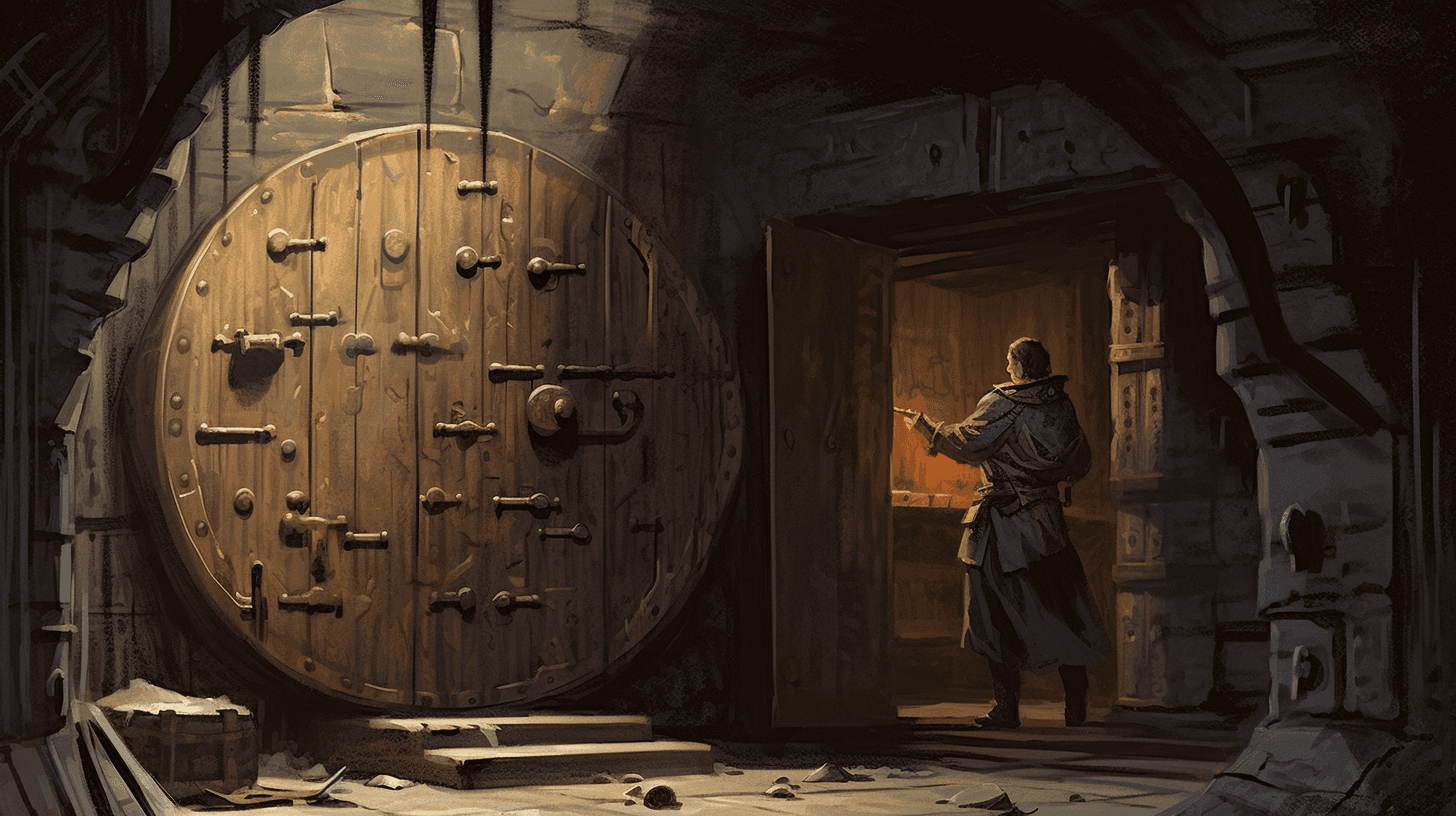
B. Incorporation of Magic and Fantasy Elements
Magic in a Thieves Guild's arsenal can revolutionize its operations, making them more efficient and elusive. For instance:
Enchanted Artifacts: A pair of boots that muffle sounds, gloves that improve lockpicking, or cloaks that grant invisibility can be invaluable tools for any thief.
Supernatural Allies: An alliance with a shadowy spirit, a pact with a demon, or a favor from a fae can tip the scales in a thief's favor.
However, the use of magic isn't without risks. It could attract attention from magical authorities or rival organizations, leading to conflict or heightened scrutiny.
Possible scenarios that arise from the use of magic could include:
A magical aura or residue left behind after a theft, leading investigators to the guild.
A rival organization employing counterspells or magical wards to protect their assets.
The overuse of magic leading to instability or a magical fallout that threatens the guild's secrecy.
C. The Impact of the Guild's Methods on the Wider World
The ripple effects of the Thieves Guild's activities can be far-reaching and impactful on both the immediate and broader campaign world. This could include:
The destabilization of an economy due to massive theft or smuggling operations.
A rise in crime rates, leading to increased guard patrols or curfews.
The exposure of a noble's dark secret causing political upheaval.
Each of these events can provide new storylines, hooks, and decisions for players.
Reactions from authorities, rival factions, and ordinary citizens are equally critical to the narrative. An exposed Thieves Guild could lead to a city-wide manhunt, a war with rival factions, or a public outcry demanding justice. These dynamics can drive the story, influence player choices, and shape the overall narrative in intriguing ways.
Wrapping Up
To summarize what we’ve learned today:
A Thieves Guild can serve numerous functions, from driving the plot to developing characters and contributing to world-building.
Organizational structures within the guild can vary, and choosing the right one depends on your campaign's goals and dynamics.
Guild goals and motivations should align with your campaign themes, providing a sense of unity and narrative depth.
The guild's modus operandi, whether traditional or magical, significantly impacts the world around them and consequently player experiences
If you enjoyed reading this, you’ll likely enjoy the other thieves guild content we’re releasing over the next few weeks. All of the content revolves around a fictional organization called the “Syndicate”. My goal is to provide a ready to use guild that you can drop directly into your campaign, or adapt to your likings.
We’ll be taking a look at topics like:
Initiations: How to join a thieves guild
Communication: How secret organizations keep their secrets
Roles: A deep dive into the roles and responsibilities of guild members
NPCs: Syndicate guild members that you can steal (~30-40)
Plot Hooks: Ideas of how to tie a guild into your existing campaign
As always, thanks for reading and may the dice roll in your favor.
All artwork was created by me (JL) using MidJourney V5.
About Jessy
Jessy is one of the two creators behind TileForge. He's spent the last 12 years as a dungeon master, TTRPG player, writer, and overall nerd.
